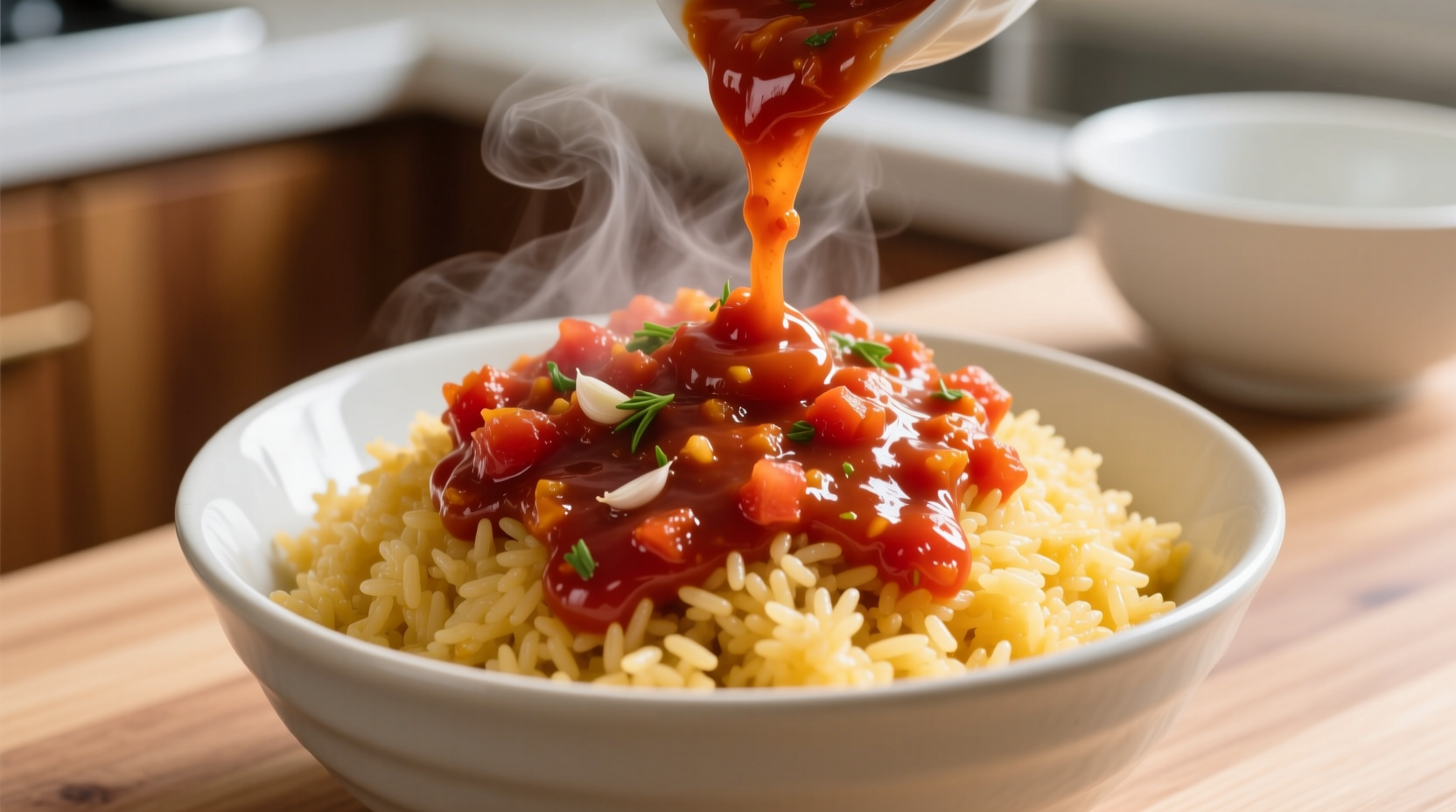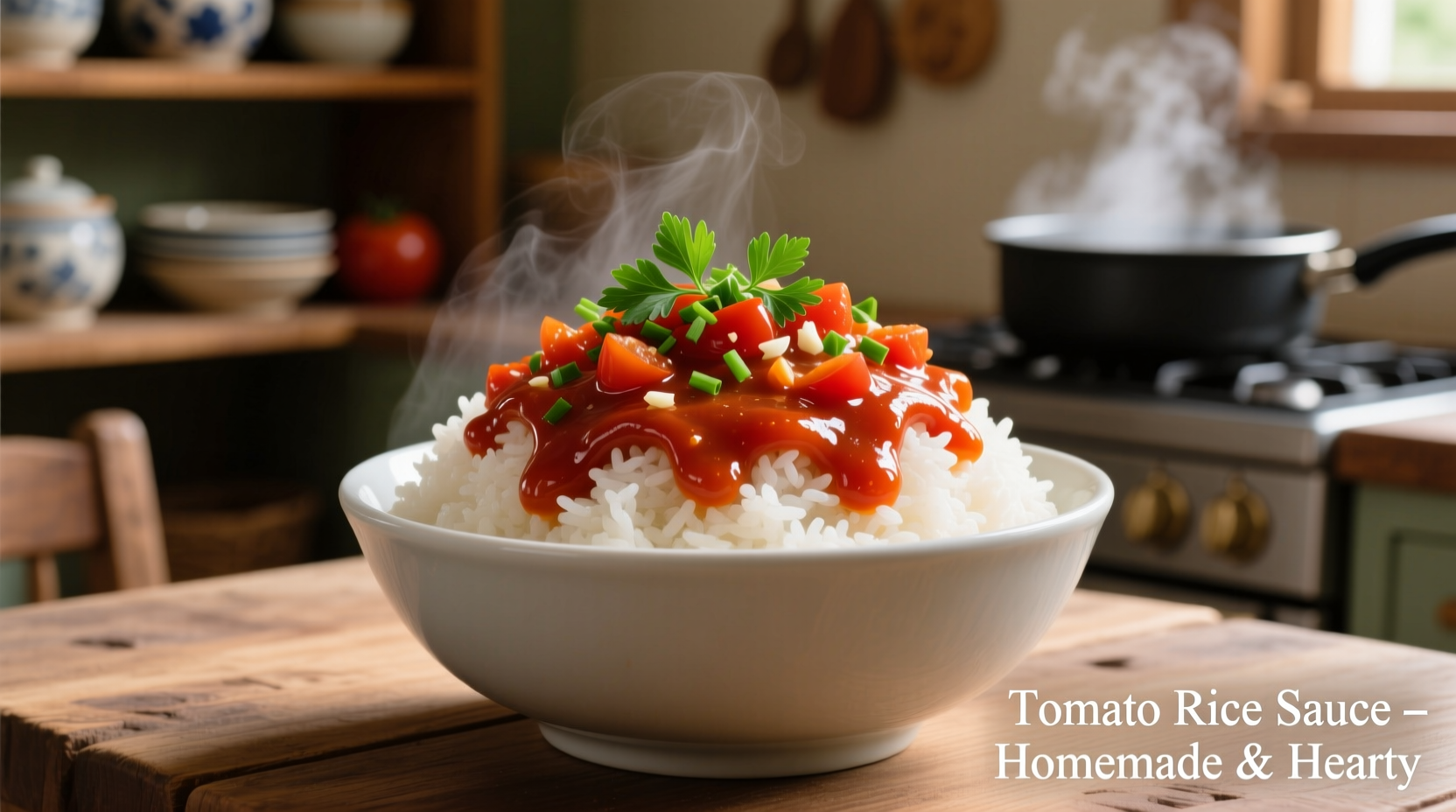Discover how to maximize flavor in your meals with the right tomato rice sauce applications. Whether you're preparing a quick weeknight dinner or crafting an elaborate feast, understanding sauce-rice pairings transforms ordinary dishes into culinary experiences. This guide delivers practical techniques chefs use to balance acidity, sweetness, and texture for perfect results every time.
Understanding Tomato Rice Sauce Variations
Tomato rice sauce isn't a single recipe but a family of preparations varying by regional traditions and ingredient quality. The base typically combines tomatoes with aromatics, herbs, and seasonings, but key differences determine which dishes they enhance best.
Historical food research from the USDA Agricultural Research Service shows tomato sauces evolved differently across continents. Spanish colonizers introduced tomatoes to Europe in the 16th century, but it took centuries for them to become kitchen staples. By the 19th century, Italian and Mexican cooks developed distinct approaches that influence modern preparations.
| Variation Type | Key Ingredients | Best Rice Pairing | Recommended Protein |
|---|---|---|---|
| Mediterranean Style | Fresh tomatoes, olive oil, oregano, garlic | Arborio or short-grain rice | Grilled lamb or white beans |
| Latin American Salsa | Roasted tomatoes, cilantro, lime, jalapeño | Long-grain white rice | Black beans or grilled fish |
| Asian-Inspired | Tomato paste, ginger, soy sauce, rice vinegar | Jasmine rice | Tofu or shrimp |
Perfect Pairing Principles
Successful pairings depend on matching sauce texture with rice type. Chefs at the Culinary Institute of America emphasize that grain structure determines sauce compatibility. Long-grain rices like basmati maintain distinct grains that work best with thinner sauces, while sticky rices absorb thicker preparations without becoming mushy.
Consider these pairing guidelines when selecting your sauce:
- Acidity balance - Pair highly acidic sauces with neutral grains like white rice
- Texture matching - Thick sauces work with sticky rices; thin sauces complement separate grains
- Flavor intensity - Bold sauces overwhelm delicate rices like forbidden black rice

Creating Your Own Versatile Sauce
Professional kitchens maintain three base sauces for different applications. This simplified home version adapts to multiple cuisines with minor adjustments:
Basic Tomato Rice Sauce Recipe
Makes enough for 4 servings of rice
- 2 cups crushed tomatoes (preferably San Marzano)
- 1 small onion, finely diced
- 2 garlic cloves, minced
- 2 tbsp olive oil
- 1 tsp dried herbs (oregano for Mediterranean, cumin for Latin)
- Salt and freshly ground pepper to taste
- Sauté onions in olive oil until translucent (5 minutes)
- Add garlic and cook 1 minute until fragrant
- Stir in tomatoes and herbs, bring to simmer
- Cook uncovered 20-25 minutes until thickened
- Season with salt and pepper
For Latin variations, add 1/4 cup chopped cilantro and 1 tbsp lime juice at the end. For Asian versions, substitute 1 tbsp soy sauce and 1 tsp grated ginger for half the herbs.
Storage and Shelf Life Guidelines
Proper storage maintains flavor and prevents spoilage. According to food safety guidelines from the U.S. Food and Drug Administration, tomato-based sauces:
- Keep refrigerated for 5-7 days in airtight containers
- Freeze effectively for up to 6 months
- Require reheating to 165°F (74°C) before serving
Freezing in ice cube trays then transferring to freezer bags creates portion-controlled servings perfect for single-meal use. Always leave 1/2 inch headspace in containers to accommodate expansion during freezing.
Creative Culinary Applications
Move beyond basic rice pairings with these professional techniques:
- Risotto foundation - Use as base liquid instead of broth for tomato risotto
- Grain bowl base - Layer under quinoa or farro with roasted vegetables
- Stuffed vegetable filler - Mix with cooked rice for tomatoes or bell peppers
- Breakfast enhancement - Serve over shakshuka or breakfast burritos
When adapting recipes, remember that sauce consistency determines application success. Thicken sauces intended for grain bowls by simmering 5-10 minutes longer. Thin sauces for risotto with additional broth or water.
When Tomato Sauce Doesn't Work
Understanding limitations prevents culinary disappointment. Food science research from USDA National Institute of Food and Agriculture shows tomato sauces conflict with:
- Delicate seafood like sole or flounder (overpowers subtle flavors)
- Sweet rice dishes including mango sticky rice
- Strongly flavored rices like saffron-infused preparations
For these applications, consider alternative sauces like citrus vinaigrettes or herb-infused oils that complement rather than compete with primary flavors.











 浙公网安备
33010002000092号
浙公网安备
33010002000092号 浙B2-20120091-4
浙B2-20120091-4